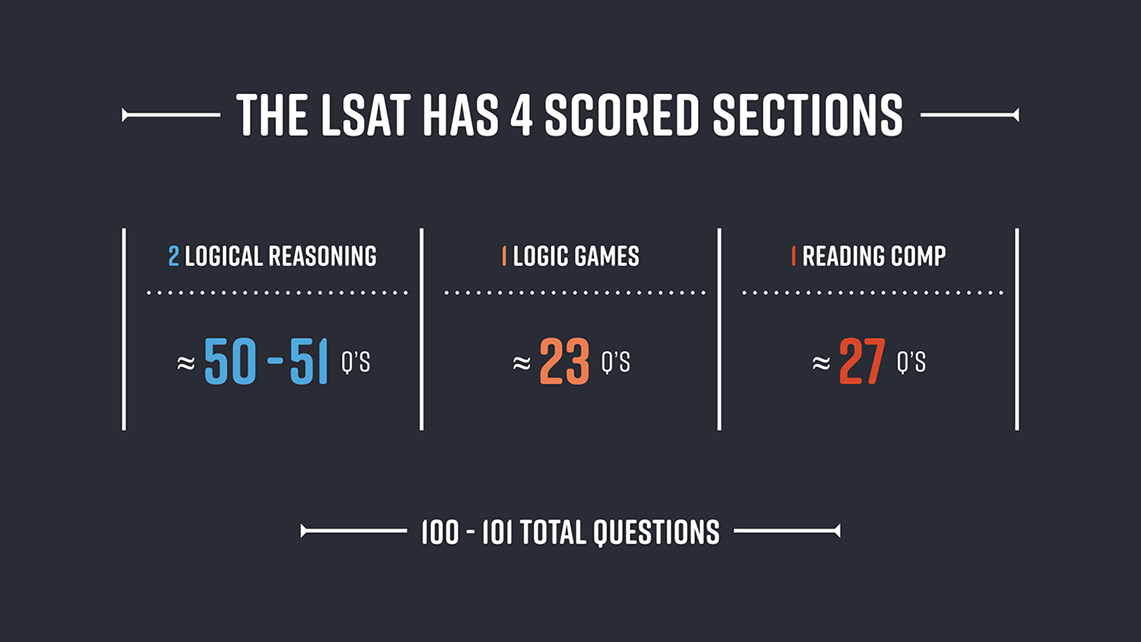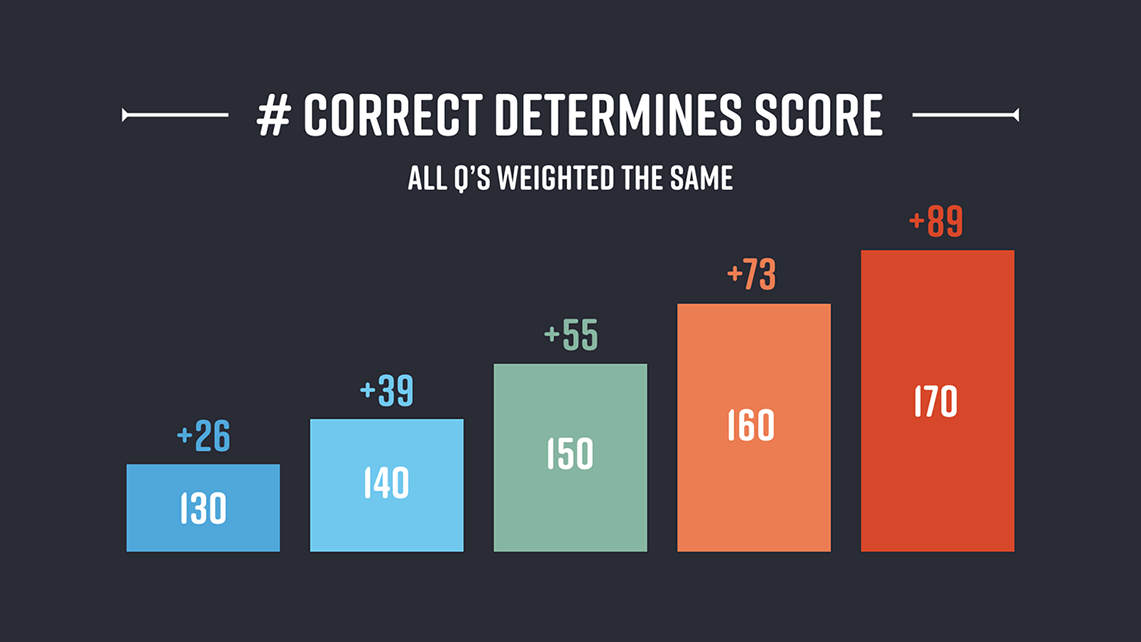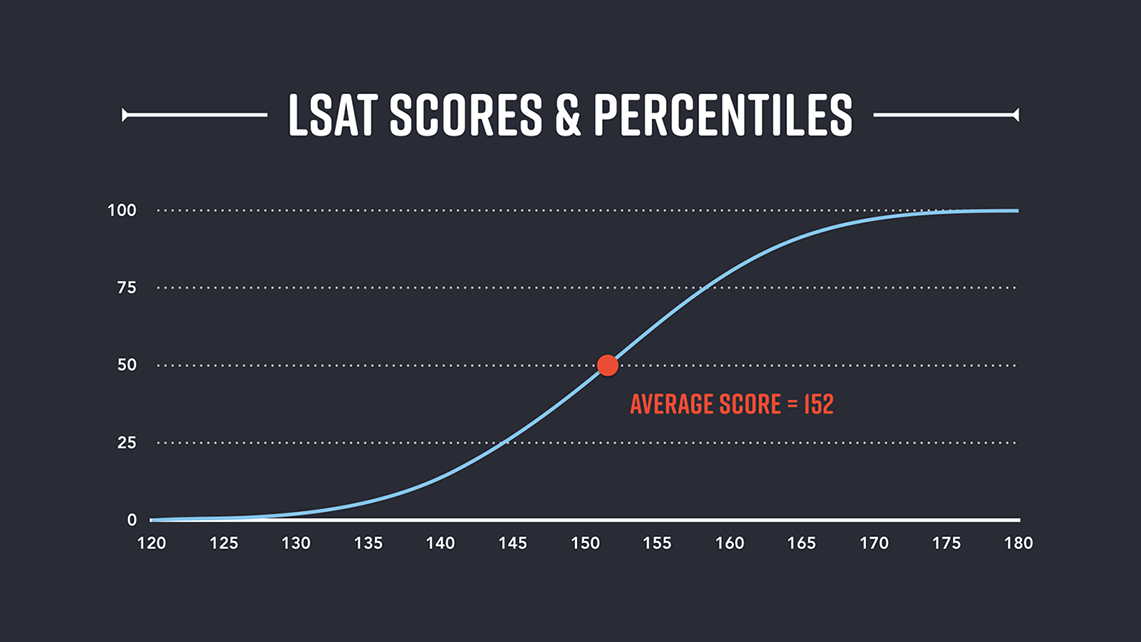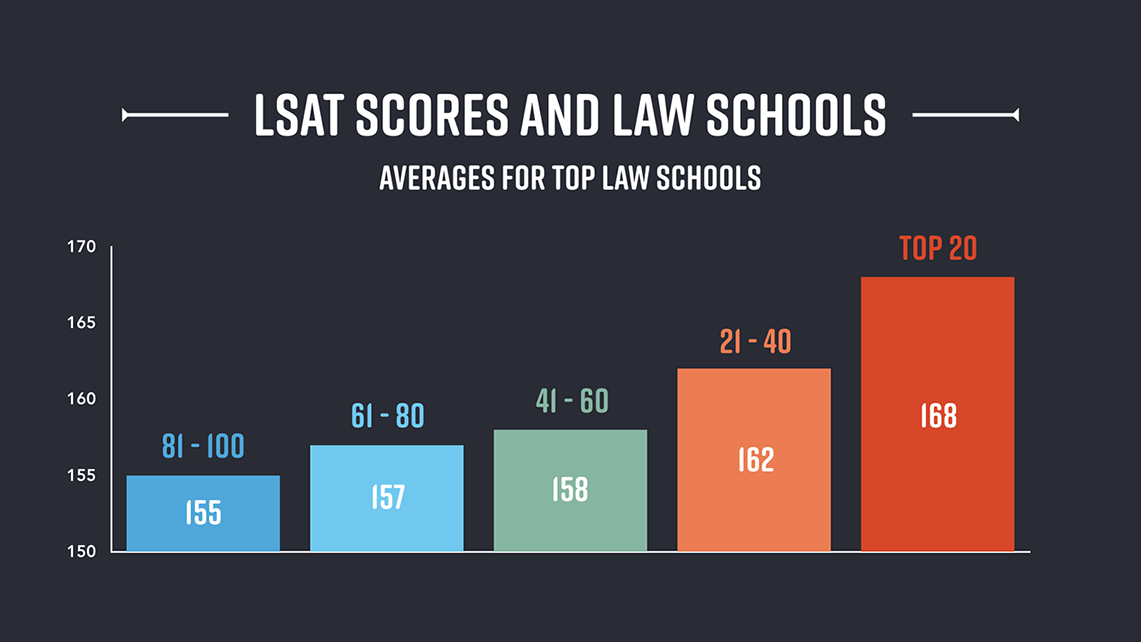In this brief article, we’ll discuss how the test is designed, how your score is computed, and what it all means in terms of where you get admitted to law school. Let’s get started.
Here’s what we’ll be covering:
- How the LSAT is designed
- How scores are computed
- The range of scores for all test takers
- How scores relate to admissions
- Final thoughts
1. How the LSAT is Designed
When you sit for the exam you will be required to complete four total sections. Only three of these sections—one Logical Reasoning section, one Logic Games section, and one Reading Comprehension section—will be scored. You will also have an experimental section, which will either be another Logical Reasoning, Logic Games, or Reading Comprehension section, and which will not count toward your overall score.
The three scored sections and the experimental section can appear in any order. The LSAT Writing, which you must take once before receiving your scores, does not factor into your overall LSAT score and is generally considered to have negligible impact on the overall admissions decision process.
Your scored Logical Reasoning section will contain, on average, about 25–26 questions, the Logic Games section on average 23 questions, and the Reading Comprehension on average about 27 questions. These numbers can vary from administration to administration, but they tend to stay fairly consistent, and any variations that appear will be minor.

Exams 69 - 78 all had 23 Logic Games questions and 27 Reading Comprehension questions. During that period, exams 69 and 75 had 50 total Logical Reasoning questions, and the rest had 51.
2. How Scores are Computed
Your LSAT score is based on a simple count of how many total questions you get correct in the four scored sections. Every problem carries exactly the same value. There is no “guessing penalty,” and an incorrect answer and a blank answer are weighed the same.
The number of questions you get correct is then converted to a 120–180 score scale. Where you land on this scale will allow you to see how you performed relative to other test takers, and relative to the medians for the law schools that you are interested in attending.

The image above represents a typical scenario, but the scoring scale for your exam will likely be slightly different. The number of right answers required to get a certain score varies from administration to administration: it is normalized to account for slight variations from test to test.
3. The Range of Scores
The distribution of scores is designed as one might expect: in the form of a bell curve, with most scores coming in the middle of the range and fewer scores at the extremes.
On the 120–180 scale, about 2% of all test takers score lower than 130, and about 2.5% of all test takers score higher than 170. About two-thirds of all test takers score between 140 and 160. The average score (based on PrepTests 69–78) is slightly less than 152.

This graph relates score (x-axis) to percentile rank (y-axis).
4. How Scores Relate to Admissions
There are two primary factors that impact law school admissions: your GPA and your LSAT score. Of these two, your LSAT score is considered to carry more weight in admissions decisions. (Please note that some schools have also started to accept and consider GRE scores.)
If you take multiple LSAT exams, nearly every law school will only consider your highest score.

This table relates average median LSAT score to law school rankings, based on the latest U.S. News and World Reports rankings - link). So, for example, the average median LSAT score for the top twenty law schools was 168.
5. Final Thoughts
The LSAT is very learnable, and if you put in the time, and if you study in the right way, you should expect significant score improvement. And a top LSAT score can help open many doors that may be very difficult to open otherwise.
I hope this post gave you all of the information you needed about LSAT scores (and maybe even more), and I encourage you to invest your time and energy into getting as high an LSAT score as you can. If you need any help, check out The LSAT Trainer, and I wish you the very best with your prep.
